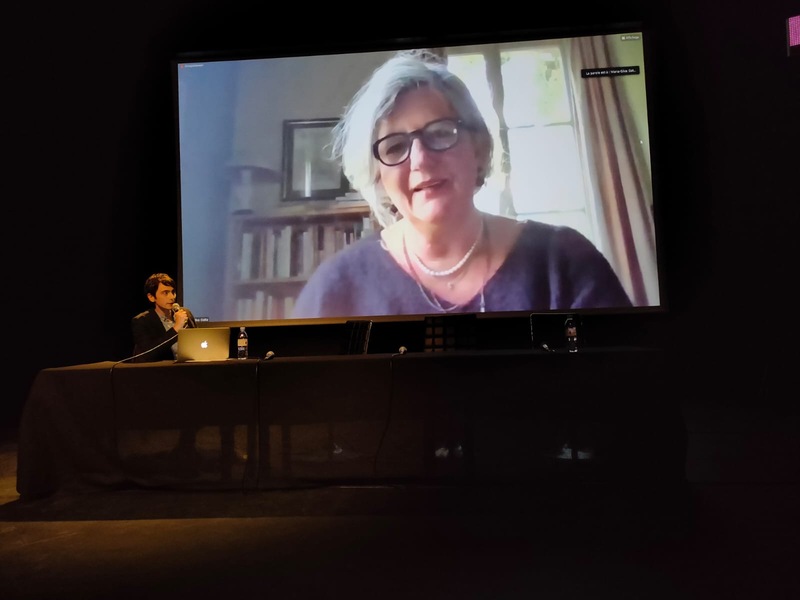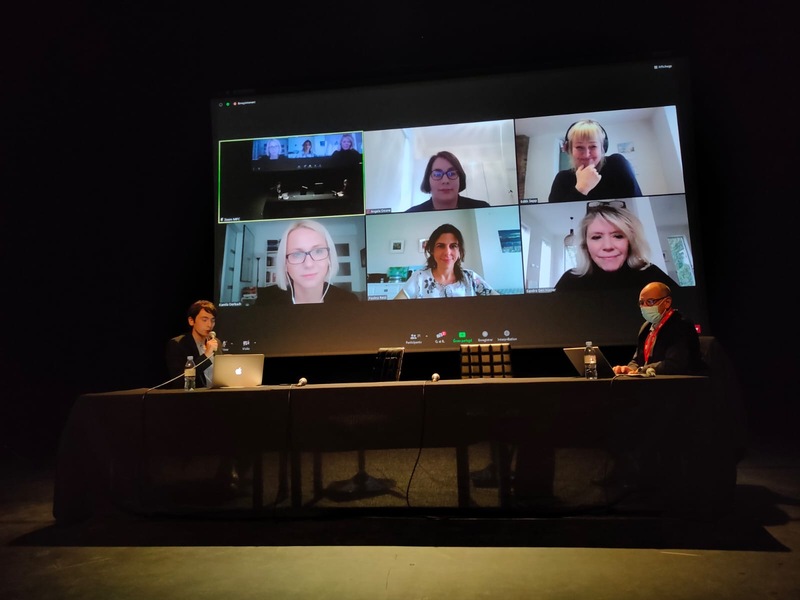Support policies for film heritage in Europe
This afternoon of Thursday, October 15 was dedicated to Europe. To open the ball, Viva Cinema journalist Pierre Charpilloz discussed with Maria Silvia Gatta, European Commission DG CNECT, Communications Networks, Content & Technology, I.3 Unit - Audiovisual Industry & media programmes.

The political advisor Mario Silvia Gatta came to take stock of the place of Heritage within the European Commission as well as the new objectives of the latter on this subject. As she explained, Heritage has for a long time occupied a somewhat ungrateful place in the programmes, between a certain historical and cultural contribution and a somewhat outdated aspect. This time is over and the health crisis has reinforced the Commission's desire to bring heritage into a real modernity, especially since 2018, the year of European Heritage. While at the heart of European policies is the need for digital innovation but also a necessary inclusion, Heritage seems to find its place. And this is what its defenders within the Commission intend to show.
Thanks to the Horizon 2020 program, the emphasis will be placed in particular on the digitization of works where until now the MEDIA program has favored support for new productions. Beyond the preservation aspect, this initiative places Heritage at a new crossroads: cultural but also technological. It is becoming a bridge between art and technology, culture and the economy. For this classical cinema that is put forward has a commercial value, can be sold, can circulate and be seen. And the few existing initiatives, such as the Festival Lumière and the MIFC, show the public's interest in this cinema. These are two lines of action, currently being finalized, that the supporters will use to convince the Commission of the importance of heritage: on the one hand its promotional aspect of the values and history of Europe through the demonstration of a European culture and its educational and economic aspect. The Commission already supports several events (the MIFC for example) but also organization (Europa Cinemas) for the promotion of this European cinema but the current work is also to direct this support towards image education which is becoming a priority. And for which heritage cinema is an essential tool.
Pierre Charpilloz then hosted a particularly feminine round table discussion with Sandra Den Hamer, President of the Association of European Cinematheques (ACE), Director of EYE (Netherlands), Kamila Dorbach, Digital Poland Programme Promotion Officer, Polish Film Institute (Poland) and Edith Sepp, Director of the Estonian Film Institute (Estonia), with Laurent Cormier, Director of the Film Heritage Department at the CNC (France). In this round table organized in partnership with the EFAD - European Association of Film Agencies, it was exposed the place and access to heritage cinema in the case of different European countries. And the conclusion is clear: it is different for everyone.

Edith Sepp, in Estonia, started by explaining a quite surprising case. In her country, the film library holds all the rights to films produced locally between 1946 and 1991, during the Cold War. But this former Soviet country does not have the original copies that are stored in Moscow! To access them and make restorations or digitizations, they have to pay. For budgetary reasons, only 10 films have been restored so far. For the other films, a massive digitization campaign was launched in 2018 and will be completed in 2023. For the moment 730 works have been digitized in more or less good condition. A collaboration with Russia, or with other states of the former Soviet bloc that are in the same case, has not yet been considered. But the goal will be to make these films available free of charge to the Estonian public.
In Poland, a major program of restoration and digitization of Polish heritage films was launched in 2008 by the Polish Film Institute, with little regular funding. However, since European aid of 78 million (Polish currency) was obtained in 2018, the program has been in full swing. Already 160 feature films have been digitized and soon this will be the case for all Polish cinema, announces Kamila Dorbach. In Warsaw, a large building, including a digitized film library, is being constructed. It will also serve as a distribution center for heritage professionals, as well as platforms such as Netflix and others. For the moment, the goal is to bring these works to the Polish public via a VoD platform developed by the Polish Film Institute. The goal, says Kamila Dorbach, with a smile, is to attract a new, younger audience, to change the image of heritage and make it cool.
Laurent Cormier returned to the French case where the CNC subsidizes and supports the rights holders in the restoration and digitization of works, with, in exchange, the right to use a little of these films at festivals. Since the launch of this 70 million euro heritage grant, 1,200 films have been restored. They all came from photochemical media and have also been digitized. According to him, support for heritage cinema is not limited to restoration, but goes as far as putting films back on the market: there is support for distribution, DVD publishing, encoding on platforms, but also for dedicated venues such as Cinémathèques, heritage initiatives such as the La Cinétek platform, or events such as the Play it Again festival organized by the ADRC or at Lumière, for example. This subsidy is coming to an end and now the CNC is calling on private patrons, companies or individuals, to help finance these restorations against a tax deduction of up to 60% (66% for individuals).
In a second, more prospective, phase, Laurent Cormier also specified that there was no real European collaboration, particularly within the EFADs, to work together on heritage films. According to him, it was more a matter of spontaneous collaborations and he therefore proposed the creation of a permanent commission.
Sandra Den Hamer responded in a somewhat astonished way. According to her, these collaborations already really exist. Even if indeed, they are done more on the side of the ACE archives rather than between the EFADs. The president of the Association of European Film Archives (ACE) also emphasizes the fine initiatives taken in each country to bring a new public to heritage cinema but hopes for support, no longer national, but European for digitization. Thus closing the loop with Maria Silvia Gatta’s introduction.




